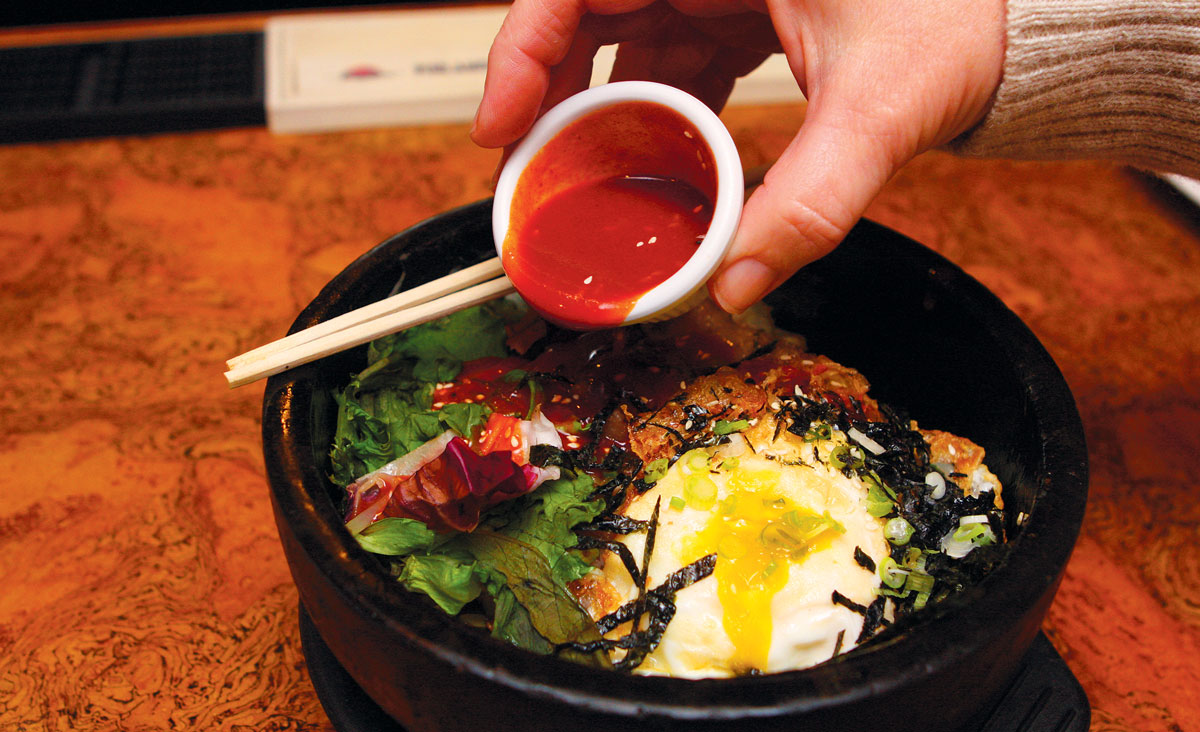Ying's Bibimbap
Many years ago friends in the South End of Boston introduced me to Bibimbap, a signature Korean dish that has enough ingredients to please most palates. In the same spirit as corned beef hash and turkey tetrazzini, Bibimbap is a tasty way for frugal cooks to transform leftovers into something satisfying, if not dazzling. After I moved to the Cape, I was pleased to discover a good local interpretation at Ying’s in Hyannis where I have introduced numerous people over the past few years to Bibimbap.
The name actually means “mixed rice” and rice is certainly the foundation. Served in a heated porous black granite bowl, steamed white rice is topped with namul (sautéed and seasoned vegetables, reminiscent of kimchi); soy sauce or fermented soybean paste; veggies including zucchini, bean sprouts, shredded carrots and spinach; sliced beef, tuna or tofu; an over-easy egg and a side of gochujang (a spicy red pepper paste) that one adds before “stirring the pot” to finish cooking the egg and make the “mixed rice”.
To eat beef bibimbap is to get a welcome refresher lesson in umami—that hard-to-describe fifth flavor (think really good Parmesan cheese) not captured by the terms sweet, salty, bitter or sour. The umami lesson at Ying’s is particularly welcome because it arrives in a gently sizzling bowl that contains comfort food of the first order. Umami is delivered by beef that has been so deeply marinated it suggests the taste of the richest pot roast, but with a lighter texture. Mushrooms, the runny egg yolk and soy provide umami reinforcement. As the warm sticky rice soaks up the sauce it gathers into pleasing nuggets that create a neat textural trick—developing an al-dente quality while retaining the integrity of the individual grains of rice within them. And before the rich flavor and textures become monotonous, balance is maintained as each bite has crunch from the veggies and lashes of bright flavor: a pickle-y pucker of kimchi here, a spicy tingle of gochujang there. By the end of the meal, as the bowl stays warm, there are crispy bits of crunchy rice along the sides, which is my favorite part. Thoroughly satisfying.
On my next visit I will order the tuna Bibimbap that my dinner companion raved about. Important note: to get the hot cooking pot, you must ask for okdol Bibimbap (pronounced “ok-dool”), which is not on the menu, so you’ll feel pretty savvy. Okdol loosely means hot, or sometimes treasured, stone.
Three great reasons to try Bibimbap: a 2011 CNN Travel reader’s poll listed Bibimbap at number 40 of the world’s 50 most delicious foods; fermented foods such as kimchi, bean paste and miso are emerging as important foods for our gut, often referred to as our second brain; and, well, it’s just a lot of fun to say: “Friends and I are going to Ying’s for Bibimbap.” Have fun mixing it up!
Ying’s Sushi Bar & Lounge
59 Center Street, Hyannis
Open daily 11 am to close; entertainment 9 pm-1am
508-790-2432 / yings.net





